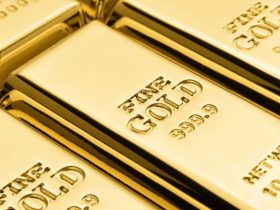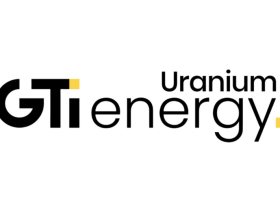Growing demand for battery metals is giving investors a good reason to be interested in lithium stocks.
Seasoned metals investors who want to look beyond silver and gold are getting involved, while new investors are being drawn into the space by electric vehicle (EV) demand forecasts and government initiatives for building out EV infrastructure.
Whatever the reason, it’s important to get familiar with the lithium market before investing in lithium stocks. Here’s a brief overview of some of the basics, including supply and demand, prices and stocks.
Where is lithium mined?
Lithium is a soft, silver-white metal used in pharmaceuticals, ceramics, grease, lubricants and heat-resistant glass. It’s also used in lithium-ion batteries, which power everything from cell phones to laptops to EVs.
Lithium is found globally in hard-rock deposits, evaporated brines and clay deposits. There’s some contention as to which type of deposit is superior, but generally there are tradeoffs for any option.
The world’s largest hard-rock mine is the Greenbushes mine in Australia, and the bulk of the world’s lithium brine production comes from salars in Chile and Argentina. Most large lithium reserves are in Chile, and the prolific “lithium triangle” spans Chile, Argentina and Bolivia. Australia was once again the world’s largest lithium producer in 2022, followed by Chile and China.
What’s the difference between battery-grade and technical-grade lithium?
There’s more than one type of lithium product out there. Technical-grade lithium is used in ceramics, glass and other industrial applications, while battery-grade lithium carbonate and lithium hydroxide, which are much more expensive, are used to make lithium-ion batteries. These lithium products can also be used for technical applications in a pinch.
What factors drive the lithium market?
Tesla (NASDAQ:TSLA) was the first carmaker to stoke excitement in the lithium space. The company’s Nevada-based gigafactory is what initially began to drive enthusiasm, but it’s not the only lithium-ion battery megafactory that Tesla has planned. In April 2023, Tesla announced it’s building a new megapack battery factory in Shanghai, China.
Tesla is also not the only firm with megafactory ambitions — as Benchmark Mineral Intelligence has pointed out, in 2020, China was building battery megafactories at a rate of one every week. Outside of China, Europe is the fastest-growing region for the lithium-ion battery market, according to Benchmark Intelligence. The EV gigafactory capacity pipeline for Europe is expected to grow by 600 percent to reach 789.2GWh by 2030.
Major car manufacturers like GM (NYSE:GM) and Ford (NYSE:F) have ramped up their EV production plans. Notably, in the US, the Biden administration’s Inflation Reduction Act, which was signed into law in mid-2022, is investing US$369 billion in climate action and energy, including EVs and EV infrastructure. In June 2023, Bloomberg reported that the US government is slated to grant Ford a US$9.2 billion conditional loan for the construction of three battery factories.
In short, the world will continue to need a lot of lithium, and some major lithium miners are already trying to make sure they’ll be able to provide it. For example, in early 2021, top lithium miner Albemarle (NYSE:ALB) announced plans to double lithium production over the next five years at its Silver Peak operation in Nevada in order to keep up with rising EV demand in North America. This will require an investment of US$30 million to US$50 million.
Another large lithium producer, Livent (NYSE:LTHM), which was spun off of FMC (NYSE:FMC) in 2018, is completing a 5,000 metric ton (MT) lithium hydroxide addition at its US project; it is expected to reach commercial production by the end of 2022. Livent’s lithium carbonate expansion to double its capacity to 40,000 MT in Argentina is expected to hit commercial production in the second half of 2023. The company is looking to add an additional 30,000 MT of capacity by 2030.
These market-shaping events and many more have analysts bullish on long-term fundamentals for the commodity; they are particularly positive on lithium demand as adoption of electric cars increases.
How to invest in lithium stocks?
So where should investors interested in lithium stocks begin? To start, it helps to understand the lithium production landscape.
For a long time, most lithium was produced by an oligopoly of lithium producers often referred to as the “Big 3”: Albemarle, SQM (NYSE:SQM) and FMC. Rockwood Holdings was on that list too before it was acquired by Albemarle several years ago.
However, the list of the world’s top lithium-mining companies has changed in recent years. The companies mentioned above still produce the majority of the world’s lithium, but China accounts for a large chunk of output as well. As already discussed, the Asian nation was the third largest lithium-producing country in 2022.
But the biggest producer continues to be Australia. In recent years, IGO (ASX:IGO,OTC Pink:IPGDF) announced the purchase of a 49 percent stake in Tianqi Lithium Energy Australia, giving it a 25 percent interest in the Greenbushes lithium mining and processing operation, as well as a 49 percent interest in Tianqi’s Western Australia-based Kwinana lithium hydroxide plant.
An up-and-comer is Liontown Resources (ASX:LTR,OTC Pink:LINRF) with its Kathleen Valley deposit in Western Australia near Kalgoorlie. A feasibility study was completed in winter 2021, with projections for annual production of 50,000 MT beginning in 2024.
In other words, lithium investors need to be keeping an eye on lithium-mining companies in Australia and other jurisdictions in addition to the New York-listed chemical companies that produce the material.
Of course, smaller lithium stocks are worth watching too — to find out which ones are currently thriving, check out our top lithium stocks article. You can also check out our top Australian lithium stocks article.
How is lithium priced?
Getting a look at lithium prices isn’t easy, and that can make it difficult for investors who are looking to assess the viability of a given project. Pricing in the lithium industry has always been opaque due to the dominance of a few major producers, with investors having very little pricing information they can trust.
Simon Moores of Benchmark Mineral Intelligence has emphasized that pricing can be a difficult concept for investors to grasp.
“The biggest myth surrounding pricing is, ‘What is the price of lithium?’ Because there is no one price,” he said. “The newcomers want one lithium price, but the existing market has a wide range of lithium chemicals and then grades within a specification.
His company publishes six lithium carbonate grades with a minimum specification of 99 percent Li2CO3 purity, four lithium hydroxide grades with a minimum specification of 55 percent LiOH and a spodumene feedstock price with a standard specification of 6 percent Li2O. Benchmark also releases broader global-weighted average prices for lithium carbonate and lithium hydroxide, plus a lithium price index, all on a monthly basis. For more on methodology, click here.
In an effort to bring more transparency to lithium prices, the London Metal Exchange (LME) has partnered with price reporting agency Fastmarkets to launch a lithium futures contract. The LME battery-grade hydroxide cash-settled futures contract allows players throughout the lithium supply chain to lessen the severity of price volatility.
Securities Disclosure: I, Melissa Pistilli, hold no direct investment interest in any company mentioned in this article.





